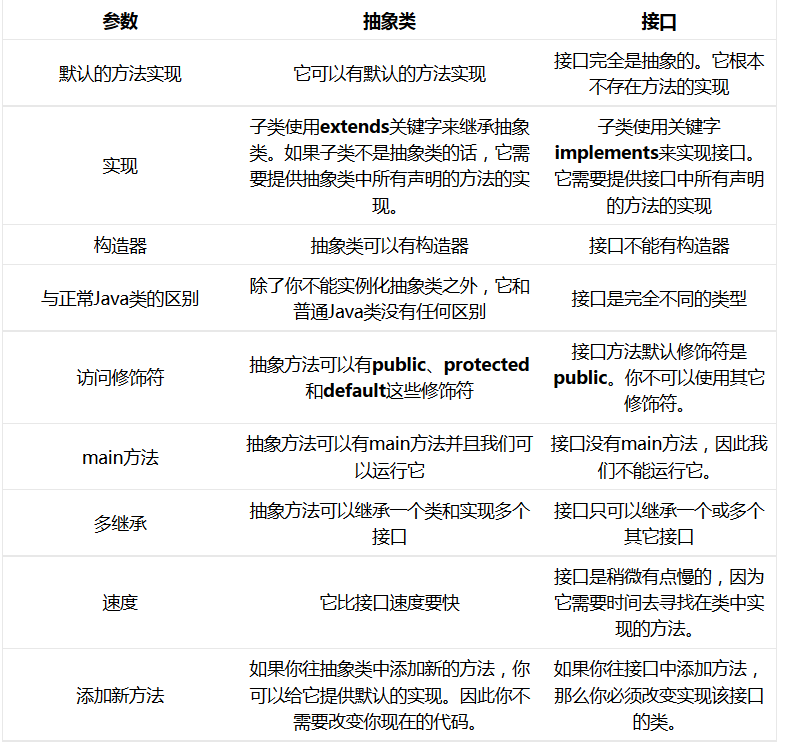Java抽象类接口 Java抽象类与接口区别介绍
Dream0000 人气:0很多常见的面试题都会出诸如抽象类和接口有什么区别,什么情况下会使用抽象类和什么情况你会使用接口这样的问题。本文我们将仔细讨论这些话题。
在讨论它们之间的不同点之前,我们先看看抽象类、接口各自的特性。
抽象类
抽象类是用来捕捉子类的通用特性的 。它不能被实例化,只能被用作子类的超类。抽象类是被用来创建继承层级里子类的模板。以JDK中的GenericServlet为例:
public abstract class GenericServlet implements Servlet, ServletConfig, Serializable {
// abstract method
abstract void service(ServletRequest req, ServletResponse res);
void init() {
// Its implementation
}
// other method related to Servlet
}
当HttpServlet类继承GenericServlet时,它提供了service方法的实现:
public class HttpServlet extends GenericServlet {
void service(ServletRequest req, ServletResponse res) {
// implementation
}
protected void doGet(HttpServletRequest req, HttpServletResponse resp) {
// Implementation
}
protected void doPost(HttpServletRequest req, HttpServletResponse resp) {
// Implementation
}
// some other methods related to HttpServlet
}
接口
接口是抽象方法的集合。如果一个类实现了某个接口,那么它就继承了这个接口的抽象方法。这就像契约模式,如果实现了这个接口,那么就必须确保使用这些方法。接口只是一种形式,接口自身不能做任何事情。以Externalizable接口为例:
public interface Externalizable extends Serializable {
void writeExternal(ObjectOutput out) throws IOException;
void readExternal(ObjectInput in) throws IOException, ClassNotFoundException;
}
当你实现这个接口时,你就需要实现上面的两个方法:
public class Employee implements Externalizable {
int employeeId;
String employeeName;
@Override
public void readExternal(ObjectInput in) throws IOException, ClassNotFoundException {
employeeId = in.readInt();
employeeName = (String) in.readObject();
}
@Override
public void writeExternal(ObjectOutput out) throws IOException {
out.writeInt(employeeId);
out.writeObject(employeeName);
}
}
抽象类和接口的对比

什么时候使用抽象类和接口
- 如果你拥有一些方法并且想让它们中的一些有默认实现,那么使用抽象类吧。
- 如果你想实现多重继承,那么你必须使用接口。由于Java不支持多继承,子类不能够继承多个类,但可以实现多个接口。因此你就可以使用接口来解决它。
- 如果基本功能在不断改变,那么就需要使用抽象类。如果不断改变基本功能并且使用接口,那么就需要改变所有实现了该接口的类。
加载全部内容